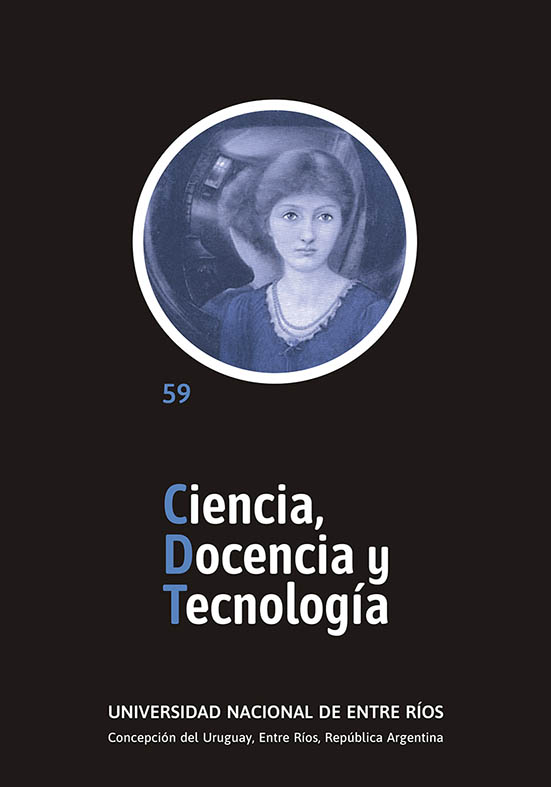Abstract
Sodium alginate was evaluated as an encapsulating material of oregano essential oil, applying the ionic gelation technique of sodium and calcium alginate. It was studied through a bifactorial design, in which two levels were adopted for the distance of fall and for the retention times in the elaboration processes. The essential oil was obtained from dehydrated oregano of the Origanum majorana variety, using a Clevenger type apparatus. The release of the essential oil in water was quantified by spectrophotometrically determined total polyphenols according to the Folin-Ciocalteau procedure. The evaluating sodium alginate as encapsulant material indicated that capsules with higher content of essential oil were obtained by process a greater distance and shorter retention time. It was concluded which sodium alginate is suitable for constituting oregano essential oil capsules and could be included in food products.
References
BOZIN, B.; MIMICA-DUKIC, N.; SIMIN, N.; ANACKOV, G. (2006). Characterization of the volatile composition of essential oils of some Lamiaceae spices and the antimicrobial and antioxidant activities of the entire oils. Journal of agricultural and food chemistry, 54(5), 1822-1828.
CELIKTAS, O. Y.; KOCABAS, E. H.; BEDIR, E.; SUKAN, F. V.; OZEK, T.; BASER, K. H. C. (2007). Antimicrobial activities of methanol extracts and essential oils of Rosmarinus officinalis, depending on location and seasonal variations. Food Chemistry, 100(2), 553-559.
CHAMPAGNE, C. P.; FUSTIER, P. (2007). Microencapsulation for the improved delivery of bioactive compounds into foods. Current opinion in biotechnology, 18(2), 184-190.
.DADALIOǦLU, I.; EVRENDILEK, G. A. (2004). Chemical compositions and antibacterial effects of essential oils of Turkish oregano (Origanum minutiflorum), bay laurel (Laurus nobilis), Spanish lavender (Lavandula stoechas L.), and fennel (Foeniculum vulgare) on common foodborne pathogens. Journal of agricultural and food chemistry, 52(26), 8255-8260.
DAMBOLENA, J. S.; ZUNINO, M. P.; LUCINI, E. I.; OLMEDO, R.; BANCHIO, E.; BIMA, P. J.; ZYGADLO, J. A. (2009). Total phenolic content, radical scavenging properties and essential oil composition of Origanum species from different populations. Journal of Agricultural and Food Chemistry, 58(2), 1115-1120
DELADINO, L.; ANBINDER, P. S.; NAVARRO, A. S.; MARTINO, M. N. (2008). Encapsulation of natural antioxidants extracted from Ilex paraguariensis. Carbohydrate Polymers, 71(1), 126-134.
DI RIENZO, J.A.; CASANOVES, F.; BALZARINI, M.G.; GONZALEZ, L.; TABLADA, M.; ROBLEDO, C.W. (2011). InfoStat. Universidad Nacional de Córdoba.
DRAGET, K. I. (2009). Alginates. In Handbook of hydrocolloids. Woodhead Publishing, pp. 807-828.
FUENTES-ORTEGA, T.; MARTÍNEZ-VARGAS, S. L.; CORTÉS-CAMARGO, S.; GUADARRAMA-LEZAMA, A. Y.; GALLARDO-RIVERA, R.; BAEZA-JIMENÉZ, R.; PÉREZ-ALONSO, C. (2017). Effects of the process variables of microencapsulation sesame oil (sesamum indica l.) by spray drying. Revista Mexicana de Ingeniería Química, 16(2).
FUNAMI, T.; FANG, Y.; NODA, S.; ISHIHARA, S.; NAKAUMA, M.; DRAGET, K. I.; NISHINAR, K.; PHILLIPS, G. O. (2009). Rheological properties of sodium alginate in an aqueous system during gelation in relation to supermolecular structures and Ca2+ binding. Food Hydrocolloids, 23(7), 1746-1755.
GARCÍA, M. F. (2015). Encapsulación de aceites esenciales funcionales para su aplicación en agricultura. Disertación Doctoral, Universidad Politécnica de Valencia.
GHARSALLAOUI, A.; ROUDAUT, G.; CHAMBIN, O.; VOILLEY, A.; SAUREL, R. (2007). Applications of spray-drying in microencapsulation of food ingredients: An overview. Food Research International, 40(9), 1107-1121.
GONZÁLEZ-MOLINA, E., DOMÍNGUEZ-PERLES, R., MORENO, D. A., GARCÍA-VIGUERA, C. (2010). Natural bioactive compounds of Citrus limon for food and health. Journal of pharmaceutical and biomedical analysis, 51(2), 327-345.
GONZÁLEZ MONTES, C. (2012). Evaluación fisicoquímica y capacidad antioxidante del aceite de amaranto (Amaranthus hypochondriacus) y estabilidad oxidativa de diferentes sistemas de encapsulación. Disertación Doctoral.
GUIMARÃES, R.; SOUSA, M. J.; FERREIRA, I. C. (2010). Contribution of essential oils and phenolics to the antioxidant properties of aromatic plants. Industrial Crops and Products, 32(2), 152-156.
HERNÁNDEZ DÁVILA, C. A. (2015). Elaboración y caracterización de Microcápsulas mediante Gelificación Iónica externa, de la fracción alcaloidea de ilex guayusa con alginato sódico, y su utilización en la formulación de una forma de dosificación sólida. .Bachelor's thesis, Escuela Superior Politécnica de Chimborazo.
HOFFMAN, A. S. (2012). Hydrogels for biomedical applications. Advanced drug delivery reviews, 64, 18-23.
HUANG, H.; HAO, S.; LI, L.; YANG, X.; CEN, J.; LIN, W.; WEI, Y. (2014). Influence of emulsion composition and spray-drying conditions on microencapsulation of tilapia oil. Journal of food science and technology, 51(9), 2148-2154.
KLAYPRADIT, W.; HUANG, Y. W. (2008). Fish oil encapsulation with chitosan using ultrasonic atomizer. LWT-Food Science and Technology, 41(6), 1133-1139.
LAGOURI, V.; BLEKAS, G.; TSIMIDOU, M.; KOKKINI, S.; BOSKOU, D. (1993). Composition and antioxidant activity of essential oils from oregano plants grown wild in Greece. Zeitschrift für Lebensmitteluntersuchung und-Forschung A, 197(1), 20-23.
PASPARAKIS, G.; BOUROPOULOS, N. (2006). Swelling studies and in vitro release of verapamil from calcium alginate and calcium alginate–chitosan beads. International journal of pharmaceutics, 323(1), 34-42.
PIZZALE, L.; BORTOLOMEAZZI, R.; VICHI, S.; ÜBEREGGER, E.; CONTE, L. S. (2002). Antioxidant activity of sage (Salvia officinalis and S fruticosa) and oregano (Origanum onites and O indercedens) extracts related to their phenolic compound content. Journal of the Science of Food and Agriculture, 82(14), 1645-1651.
SHAHIDI, F., HAN, X. Q. 1993. Encapsulation of food ingredients. Critical Reviews in Food Science & Nutrition, 33(6), 501-547.
The authors retain the copyright and grant the journal the right to be the first publication of the work, as well as licensing it under a Creative Commons Attribution License that allows others to share the work with an acknowledgment of the authorship of the work and publication initial in this magazine. All content is published under the Creative Commons 4.0 international license: Attribution-Non-Commercial-Share Alike.

